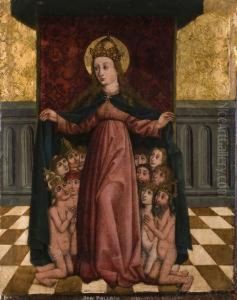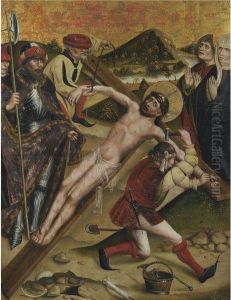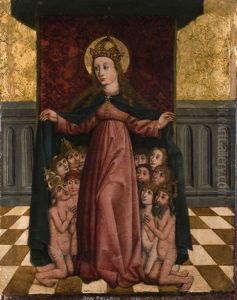Jan Pollack Paintings
Jan Polack (also known as Johannes Polack) was a notable Northern Renaissance painter whose work significantly contributed to the artistic landscape of late 15th and early 16th century Munich. Born around 1435, Polack's origins are somewhat obscure, but he is thought to have come from Kraków in Poland, hence the name 'Polack' indicating his Polish background. His activities in Munich are well documented from the late 15th century until his death in 1519. Polack's artistry was deeply influenced by the prevailing Gothic traditions, yet he demonstrated a keen awareness of the emerging Renaissance sensibilities that were sweeping through Europe at the time.
Polack's body of work primarily consists of religious-themed paintings, altarpieces, and frescoes for churches and monasteries in and around Munich. One of his most celebrated works is the altarpiece for the St. Anna church in Munich, which showcases his meticulous attention to detail and his ability to convey complex theological ideas through visual means. His style is characterized by a harmonious blend of vivid colors, intricate details, and a keen observation of human emotion, all of which are encapsulated within the traditional Gothic framework.
Despite the transformative period of the Renaissance, Polack's work remained deeply rooted in the Gothic tradition, a testament to the regional preferences and the slow diffusion of Renaissance ideals in certain parts of Europe. However, his paintings also reflect a gradual incorporation of Renaissance techniques and motifs, demonstrating his adaptive approach to art-making. Jan Polack was a pivotal figure in the Munich art scene, bridging the gap between the late Gothic and early Renaissance periods. His legacy is preserved through his contributions to the visual culture of his time, marking him as a significant artist in the history of European art. Polack's death in 1519 marked the end of an era, but his works continue to be celebrated for their historical and artistic value.


